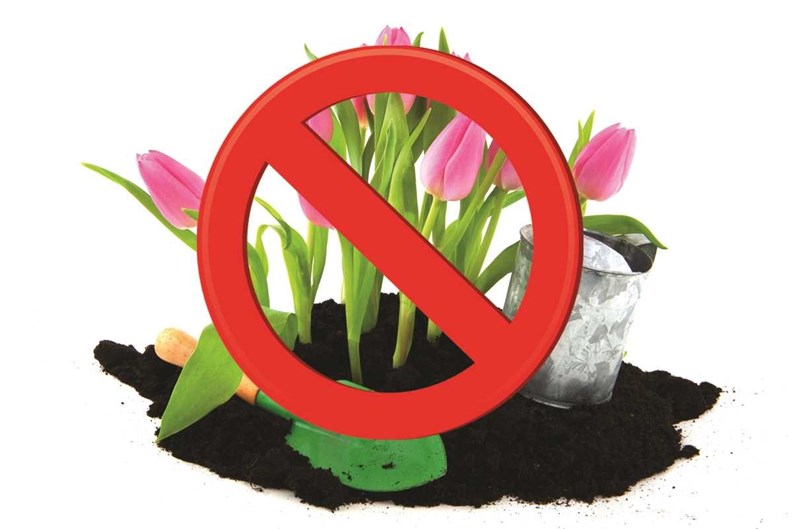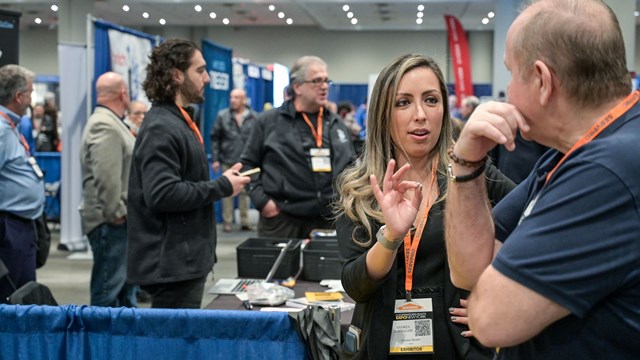South Florida is often portrayed in the movies and other media as one long beach, lush with exotic plants and palms stretched out under a brilliant, sunny sky. While that snapshot of South Florida living is pretty accurate, the verdant backdrop didn’t just happen by magic. Even in a sub-tropical climate, nature needs a helping hand to control plants and trees in an urban setting—and those romantic photos give no clue to the hard work behind the scenes.
Cultivating an attractive landscape in a multifamily environment presents numerous challenges for association boards, HOAs, COA’s, and co-ops alike. Pollution, heavy foot traffic, pets, pest, and litter all make it tough for plants and flowers to survive, and thrive. So where does a board or landscape committee go for information, resources, and guidance? What about “reading up” on soil, water, and native plants, and doing it yourself?
Down the Garden Path
Many times boards and landscape committees put energy and time into do-it-yourself (DIY) landscaping in an effort to spare themselves the expense of hiring a professional landscape design company. However, if a committee chooses the wrong type of plant, or puts a shrub, tree, or flowerbed in the wrong place, the poor results may be more than just an eyesore; a mistake can result in both replacement costs for dead or damaged plants as well as repair costs for structural damage caused to roofs, foundations, or pavement.
If a committee is willing—or actually enjoys—the physical labor associated with landscaping, a professional can be hired on a consulting basis to develop a sound plan with appropriate plants; moving forward without at least some professional advice is risky business. A little proactive spending on a consultant to get a proper plan in place could save considerable time, money and effort. Visiting informative sites on the Internet, especially the local IFAS Extension Services (dade@ifas.ufl.edu) can help a board formulate a specific Q&A before raising questions with a current vendor or calling another professional landscaper.
Bringing An Expert On Board
Once the board has a rough idea of the challenges, the desired outcome, and budget constraints, it is time to reach out to a professional. Scott Prinz is owner and president of LandKeepers, Inc. in Miami. He says the number-one problem he notices with landscaping is that of placement. “Architects often place planters close to the buildings to create an attractive entrance. It is assumed since the planters are outside, nature will supply rain water and keep the plants healthy, but the reality is the building overhang diverts the rain, and these plants die quickly.” Prinz explains this is easily missed, and a few rotations of plants may come and go before the reason for the constant die-offs becomes clear. Switching out to more location-appropriate plants is one solution; Prinz also suggests the board consult with a professional for some watering options, since moving the planters is often impossible.
That's just one example of how the “wow factor” often overshadows the hidden cost of maintenance. “Landscaping and recurring maintenance needs to be understood as a package,” says Prinz, who goes on to say that he recently consulted with an HOA board over a different (but still very common) placement problem: the wrong plant in the wrong place. In this instance several bromeliads had been place in full sun, and they had taken over and spread out of control. Bromeliads should be planted in a shaded location to control growth and spreading. The wrong plant in the wrong place can lead to all kinds of headaches—and expenses.
Matthew Weinrich, an account manager with Brickman Sunrise, a national landscaping company in Davie, echoes Prinz’s observation. “It may be the opinion of the board that a particular plant, in a particular color, needs to be planted in a specific place,” he says, “but the biggest mistake boards make is in selecting landscaping based on opinion rather than facts. The fact is the variety of plant or flower requested may not thrive in the location the board would like.”
Weinrich explains the many factors involved in choosing appropriate plants. “Sun exposure is one factor; does a plant require full sunlight, or a shady place?” Soil type, irrigation, and the plants size at maturity are all variables he examines when making landscape plans and suggestions. He recommends due diligence, not trial and error. “Physical labor, time involved, and the board’s bank account should all be taken into consideration.”
Chase Greene, a contractor with Broward Landscape in Coral Springs, cites two major, reoccurring mistakes he encounters in his work with HOAs. “Oftentimes, board members are not on the same page when it comes to the future of the landscaped space, and the landscape designer has no chance of success if the community cannot provide clear direction and vision for the project.” This is an issue the board must resolve before any progress can be made.
The second issue Greene deals with frequently is budget. “Every association is not in the same financial situation,” he says. He often sees communities that are not concerned with budget; they are more interested in the “wow factor.” If money is an issue, he suggests the board decide on their budget, and then choose a designer who can deliver the biggest bang for the bucks available.
Like Weinrich, Greene finds boards often rely on opinions rather than hard facts. “Many times board members think they have the tools to successfully design and install a community’s entrance because they tinker in the backyard on weekend,” he says. “As paid contractors, we are licensed, insured, and educated in this trade. Hire a professional.”
“We will work with the board to achieve the goals set forth using the right material, in the right place, to achieve the right results. Landscaping is the first thing noticed when entering a property—but it should be the last thing a board has to worry about,” says Weinrich. “Hiring a professional company takes all the guesswork out of landscaping.”
We Need A Do-Over
Unless a board is starting out fresh with no landscaping in place, the chances are good some problems already exist. Fortunately many fixes can be accomplished easily and without too much expense. When Prinz was called in to tame the out-of-control bromeliads, he simply relocated the plants under the existing palms already on the property; a fix that was beautiful, effective, and inexpensive. “Anytime plants can be saved and relocated...it represents real savings to an association’s landscape budget,” states Prinz.
When Weinrich encounters plants struggling with a loss of natural light, he determines if transplanting the affected plants is the better option, or if careful pruning of the existing trees will allow more sunlight to filter through. Either method is easier and more economical than removing the plants and starting over. When plants just aren't flourishing, Weinrich also recommends soil testing to determine if fertilizer or soil enrichment is a possible solution rather than going to the expense of replacing the plants.
Whenever corrective action is possible, Greene recommends a board act quickly. “If they postpone fixing an issue, they will need to spend even more money later. The lesser of the evils is to correct problems immediately.” He cites instances where ignoring overhead tree canopies can result in damage residences, vehicles, and people. Large limbs can present a hazard for the residents and the physical structures. Excessive root growth can damage foundations, sidewalks, and even streets; a problem that will only grow more damaging and expensive over time. “We always recommend rectifying a situation as soon as the community becomes aware of it to avoid compounding the issues,” states Greene.
Getting In The Last Word
'Be proactive,' and 'cultivate good relationships with your hired pros' is the takeaway from the landscapers polled for this article. As a board, always make sure you're dealing with licensed, insured, and bonded companies. If a proposal seems to be good to be true, be wary, and do some homework. All the experts recommend factoring in budget constraints and finding a design to fit the dollars allocated.
“Be specific, and provide details to obtain a better result,” says Greene. Ask for computer renderings before you start,” he says.
“Also remain flexible and open to ideas,” suggests Weinrich. Finally, Prinz, Weinrich, and Greene all agree it's crucial to ask for and document adequate warranties on your plant materials. A typical range is six months to a year.
Landscaping is not a “one and done” project but an ongoing endeavor requiring time, talent, and funding to create and maintain the best community appearance all year long. Taking advantage of expert recommendations and suggestions is the smart way to enhance and preserve both the beauty and the investment in any community’s landscaping.
Anne Childers is a freelance writer and a frequent contributor to The South Florida Cooperator.





Leave a Comment